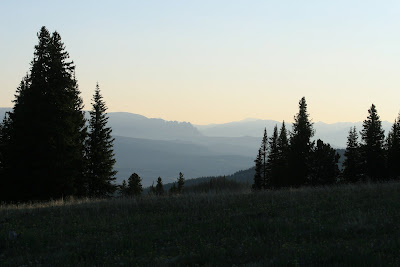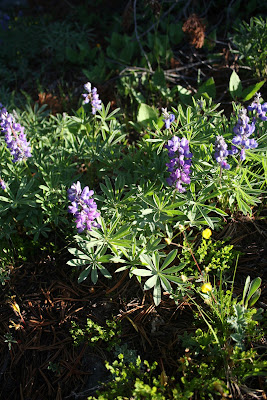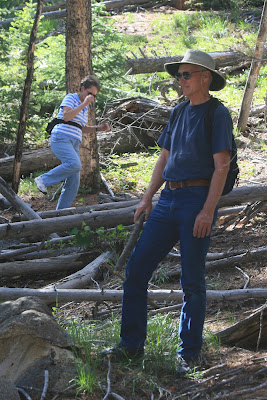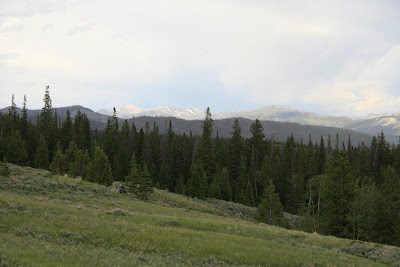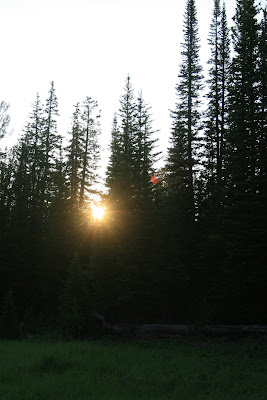
[1]
July 20, 2009
Summer is moving right along. It doesn't seem like it as it was so late in arriving. It was barely light the other moring when I thought this would be a good morning to head for the high country even if for only a few hours. It is cold at 37 degrees when I leave town with a full cup of Kathy's European blend. Frank has been gone for a week and the shop has been late in opening at 7:00 so it is perfect to find him there at 5:30.
30 minutes later I am near the top of Union Pass SW of Dubois as the first rays of the sun bust the eastern horizon and filter coldly through the Spruce. It is 29 degrees on my truck thermometer.



